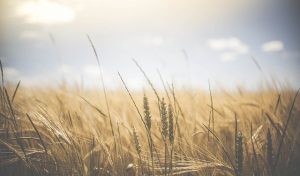What is Agriculture-History of Agriculture
Introduction
The term agriculture is derived from Latin words ‘ager’ or ‘agri’ meaning “soil” & ‘cultura’ meaning “cultivation”. To produce the crops, human beings tilled the soil, hence that tilling (cultivation) of soil is called agriculture. Agriculture is an art and science both in which we study all the human activities related to use of soil.
But the definition of Agriculture is not only confined to only tilling of soil, though it’s a very broad term encompassing all aspects of crop production, livestock production, fisheries, forestry etc.

History of Agriculture
- During the period 8700 B.C to 7700 B.C the Homo sapiens, the direct ancestor of modern man Homo sapiens sapiens, domesticated animals and turned as herdsman. He first domesticated sheep and then goat.
- Between the period 7500 B.C to 6500 B.C gradually shifted from hunting and gathering to agriculture. Stone axes was main tools for cutting trees and then burning. The cereals grown during that period were wheat and barley and later they grown rice, maize and millet.
- Subsequently they domesticated cattle, pig, horse and ass. So that cultivation of crops started during 7500 B.C and thus agriculture science came into existence.
- Later discovery and use of iron revolutionized the agriculture and needs of rising population and earnest desires too.
- Agriculture has no single and simple origin of development, but it was started in different parts of the world during different periods.
Important events in the history of agriculture
Events >10,000 B.C Hunting & Gathering 8700-7700 B.C Domestication of sheep & goats 7500 B.C Cultivation of Wheat & Barley 6000 B.C Domestication of cattle & pigs 4400-3500 B.C Cultivation of Maize & potato 3400 B.C Wheel invented 3000 B.C Bronze tools 2900 B.C Plough invented & Irrigated farming started 2300 B.C Chickpea, pear, sarson, cotton cultivation 2200 B.C Cultivation of rice 1800-1725 B.C Cultivation of finger millet & sorghum 1500 B.C Cultivation of Sugarcane 1400 B.C Use of Iron 15 century A.D Cultivation of orange,brinjal,pomegranate 16 century A.D Introduction of various crops into india by Portuguese like potato, tomato chilli,tobacco, groundnut,guava,papaya, pineapple etc.
India’s most important contribution to the world is rice i.e. staple food of most Indians and east Asia. Sugarcane, number of legumes and mango are also natives of India. Indian agriculture is mainly of subsistence type. Later commercialization of agriculture started through replacing subsistence to exchange economy.
Van Helmont (1577-1644 A.D) presented plant nutrition in a systematic way and concluded that main principle of vegetation is water.
Jethro tull (1674-1741 A.D) published a book “Horse Hoeing Husbandry”. His experiments were based on cultural practices and that led to development of seed drill and horse-drawn cultivator.
Arthur Young (1741-1820 A.D) published his work i.e. pot culture experiments to increase yield by applying poultry dung in “Annals of Agriculture”.
Research in plant nutrition and physiology started in 18th century. A truly scientific farming approach was led by Justus Von Leibig in 1840.
Gregor Johann mendel in 1866 given law of heredity that led to modern plant breeding. Later Charles Darwin proposed “Theory of Revolution”.
Seed drill was devised in 1830 and first tractor was built in U.S in 1892 and thus farm machinery were manufactured largely in 1930.
Scientific Agriculture in India
It began when sugarcane, tobacco, cotton like commercial crops were grown for export purpose.
- A joint department of agriculture, revenue & commerce was established in 1870, and later on the recommendation of famine commission of 1880, a separate department of agriculture was started with the objectives to meet the needs of people and industrial raw materials for export.
- In 1903, Imperial Agriculture Research Institute was started in Pusa, Bihar shifted to New Delhi in 1936. Now, commonly known as Indian Agriculture Research Institute, Pusa, New Delhi.
- Sugarcane breeding institute was established in Coimbatore (Tamilnadu) in 1912.
- Later on Imperial council of agricultural research, now “Indian council of Agricultural Research” was established in Pusa, New Delhi to coordinate the work of agricultural research in India.
- Agricultural universities were started in India from 1964 onwards and first agriculture university i.e. G.B. pant university of agriculture & technology in Utrakhand was established in 17 November 1960 by late Pd. Jawahar lal Nehru.
Read More Post…..
TYPES OF FARMING- SYSTEM OF FARMING
CROPPING PATTERN-CROPPING SYSTEM
SOIL TYPES IN INDIA: FEATURES
SOIL TEXTURE- CLASSIFICATION & INFLUENCE
SUBSISTENCE FARMING-HISTORY & TYPES
WHAT IS IRRIGATION- DIFFERENT METHODS
It’s very useful information!!
thank you for your valuable time.
Nice information
Thank you very much to read the article.
Great Article. Chronology helps us understand development if Agriculture since inception. Looking for more article.
Thanks for your valuable time.